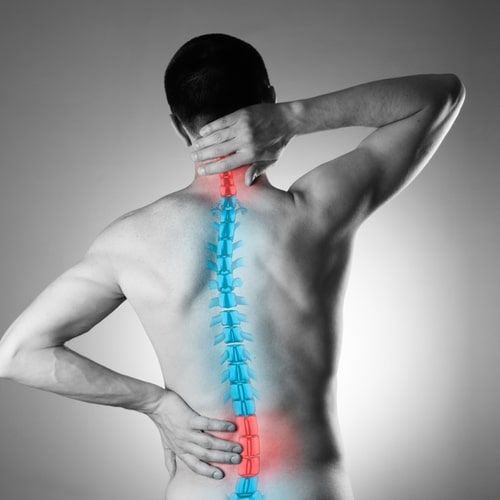Anterior lumbar interbody fusion (ALIF) surgery is a surgical procedure performed in two parts. The first part includes removing a damaged lumbar disc from between two vertebrae, while the second part deals with placing a bone graft in order to fuse the two vertebrae together. Lumbar fusion is used to provide stabilization to the spine once the damaged disc has been removed. Interbody fusion can also be used as a way of relieving pain caused by motion. Once the discs are fused together, they can no longer move or cause pain.
Did You Know?
Most spinal surgeries are performed using a posterior approach, meaning that the surgeon enters through the back. However, ALIF uses an anterior approach where the surgeon enters through the abdomen. Not only does this allow more direct access to the lumbar spine, but it decreases recovery time.
Frequently Asked Questions:
Am I a candidate for anterior lumbar interbody fusion (ALIF) surgery?
You may be a candidate for ALIF surgery if you have a symptomatic damaged lumbar disc. An anterior approach is generally used for treating degenerative disc disease or if you have already had previous spinal surgeries using a posterior approach. To find out if anterior lumbar interbody fusion is right for you, schedule a consultation with Dr. Pranay Patel at one of our South Bay, Los Angeles, Long Beach, or Manhattan Beach locations.
What can I expect when having anterior lumbar interbody fusion (ALIF) surgery at Ocean Spine with Dr. Pranay Patel?
You can expect your ALIF surgery to be performed at a hospital or surgical center under general anesthesia. The first part of your surgery (discectomy) will be performed by making an incision in the left side of your abdomen to access the affected area. The abdominal muscles and peritoneum containing the abdominal organs can both easily be retracted to reach the lumbar spine without actually entering the abdomen. Once the lumbar spine is accessed, any bone spurs or damaged discs will then be removed from this area.
The second part of the surgery (fusion) will then be performed by placing a bone graft into the empty spaces left by the removed tissues. Bone grafts may be obtained from your bone, a donor, or using a synthetic bone graft compound. To provide additional support, the bone graft is usually placed in a metal, plastic, or bone spacer or cage. The retracted tissues will be returned to their proper location and the incision will then be closed with sutures.
What can I expect after having anterior lumbar interbody fusion surgery?
After your surgery, you will wake up in recovery where you will be monitored as the effects of the anesthesia wear off. In most cases, you can expect to remain in the hospital for 1-3 days while you work on moving around. Oftentimes, you must be able to sit up, move, and walk in order to be discharged.
As you start the recovery process, it is normal to have some pain. Dr. Pranay Patel will provide you with the necessary pain medications to manage any post-operative discomfort. You will also be provided with a list of instructions to follow until you have recovered. Generally, these include guidelines on wearing a back brace, attending physical therapy, and avoiding activities that strain your spine, like lifting or twisting. While most patients recover in about 4-6 weeks, it takes a full 12-18 months for the vertebrae to completely fuse. Because of this, there may be certain activity restrictions that last longer than 4-6 weeks.

